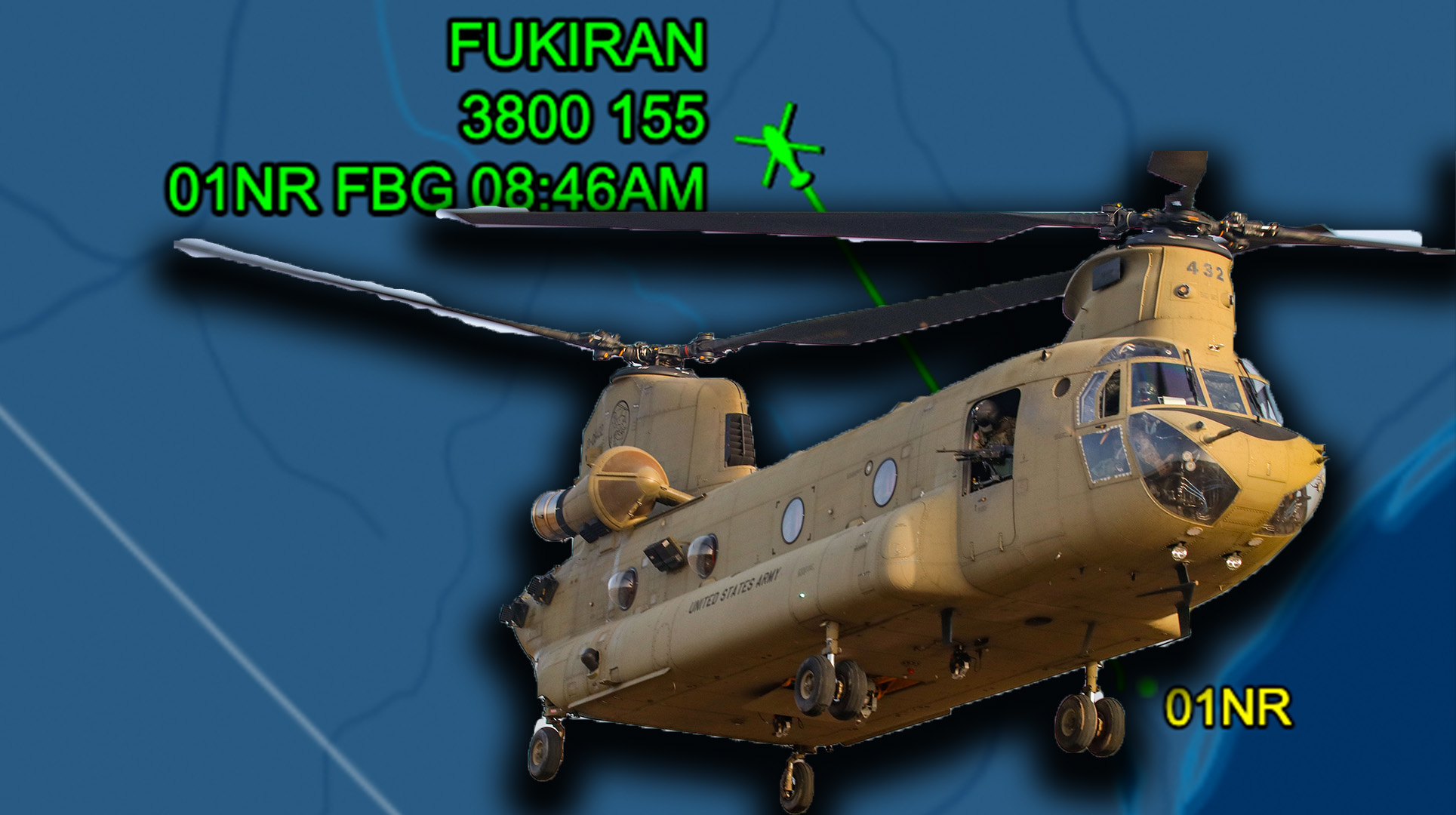

It’s nothing new when an Army helo crew throws out interesting call signs before taking flight. Today, a CH-47 Chinook helicopter crew — with a tail number of AE59B1 — plugged in a call sign of “FUKIRAN” when they flew from Wilmington to Fayetteville, North Carolina.
“The 82nd Combat Aviation Brigade acknowledges someone used an unauthorized and inappropriate moniker for one of its helicopters that recently returned from a deployment,” said Lt. Col. César Santiago, an Army spokesman, in a statement to Task & Purpose.
In terms of this specific call sign, the crew seems to have a sense of humor. The spelling for the call sign is off, but it’s very similar to a Japanese orchid flower called the Fuukiran, a type of Neofinetia falcata orchid. The Fuukiran — not “FUKIRAN” — is referred to as a rich and noble orchid because it was historically owned by the samurai and people of similar rank in Japanese society.
Other names for the Fuukiran are “wind orchid” or “blade orchid,” so one of the pilots may be interested in Japanese flowers or culture — or they just wanted to make a statement.
Subscribe to Task & Purpose today. Get the latest military news and culture in your inbox daily.
In-flight call signs are an integral part of military and civilian aviation. They are not the nicknames military pilots assign each other, also known as “call signs.” Pilots use their flight call signs when speaking to air traffic controllers, and they program the call signs into their navigation equipment, which civilian flight tracking services can track.
The “FUKIRAN” call sign was leaked to the internet by flight tracker accounts on Instagram and Twitter, and it is the latest in a series of lewd call signs. The Navy recently released a statement in response to a Naval call sign of “IDICK69.”
“Going forward, aircrews are being advised to challenge call signs that may be perceived as unprofessional or inappropriate,” Cmdr. Beth Teach, a Naval Air Force Pacific Fleet spokeswoman, previously told Task & Purpose.
On Aug. 12, the crew of a Navy E-6B Mercury had to change the lewd call sign mid-flight. They started broadcasting “IDICK69” before taking off from Travis Air Force Base in California and changed it to “STOB7” before landing in Texas. But once the internet gets a hold of it, there’s no erasing that knowledge.
Lewd and inappropriate call signs are something the different branches of the military have tried to prevent. Task & Purpose has reported on several other examples of lewd call signs and flight patterns. Everything from “boobies” and “titties” to flight patterns resembling male genitalia.
Though some on social media claimed it could be a case of hacking, it’s highly unlikely that a hacker could access a military aircraft’s computer to change a call sign. Or, it could result from a crew that plays a joke on the replacement crew, changing the call sign before handing it over to the new crew in the hopes they won’t notice.
Punishments can vary when crew members make bad choices on call signs or flight patterns. Some crews are scolded, while others have been fired from their jobs if they have a pattern of poor choices.
“The 82nd Airborne Division is approaching the matter with the utmost seriousness and intends to address the issue,” Santiago said of the most recent example of belligerent callsigns. “This call sign is inconsistent with the professional standards, core values and expectations within the 82nd Airborne Division and the United States Army.”
The latest on Task & Purpose
- Suspended 4-star general denies he pressured panels to promote officer
- Navy must consider moving EA-18Gs from Whidbey Island to El Centro after noise lawsuit
- Air Force vet who fled to Russian military says his call sign is ‘Boston’
- 10th Mountain soldiers summit 46 highest Adirondacks peaks in one day
- Anglers, Squids, POGs and ‘AAA-0’ —Military nicknames we love
